by Erika Gaffney, Art Herstory Founder
There is exciting news from Montreal—the city’s Museum of Fine Arts (MMFA) is shining a spotlight on early modern European women artists in its collection! Spotlight: Women Artists in the Early Modern European Art Collection integrates works by women into its permanent display of early modern art.

Most of the spotlit makers are women from the seventeenth, eighteenth, and early nineteenth centuries. But there are also works by two contemporary women artists: Flora Yukhnovich and Beth Lipman. Yukhnovich’s painting Total Betty (a promised gift to the museum) and Lipman’s sculpture Tea Table II are relevant since the artists’ practices “engage closely with historical material,” according to Chloé Pelletier, MMFA Curator of European Art (before 1800).
The Spotlight feature brings together collection highlights, new acquisitions and never-exhibited works from storage. In terms of mediums, the display incorporates larger-scale paintings, including portraits in oil or pastel; miniature portraits; depictions of flowers; a fruit still life; sculptures; and some newly acquired engravings. The historic works are by—or attributed to, or after—women artists who worked in France, Britain, Italy and the Netherlands.
Portraits in oil or pastel
Portrait of Madame Lethieullier (1739), by Rosalba Carriera, is the first Spotlight work we came across. It is placed just inside the entrance on the second floor. Though the museum acquired the pastel in 2013, it is the on view in the galleries for the first time. Given the light sensitivity of the medium, it cannot remain on permanent display.
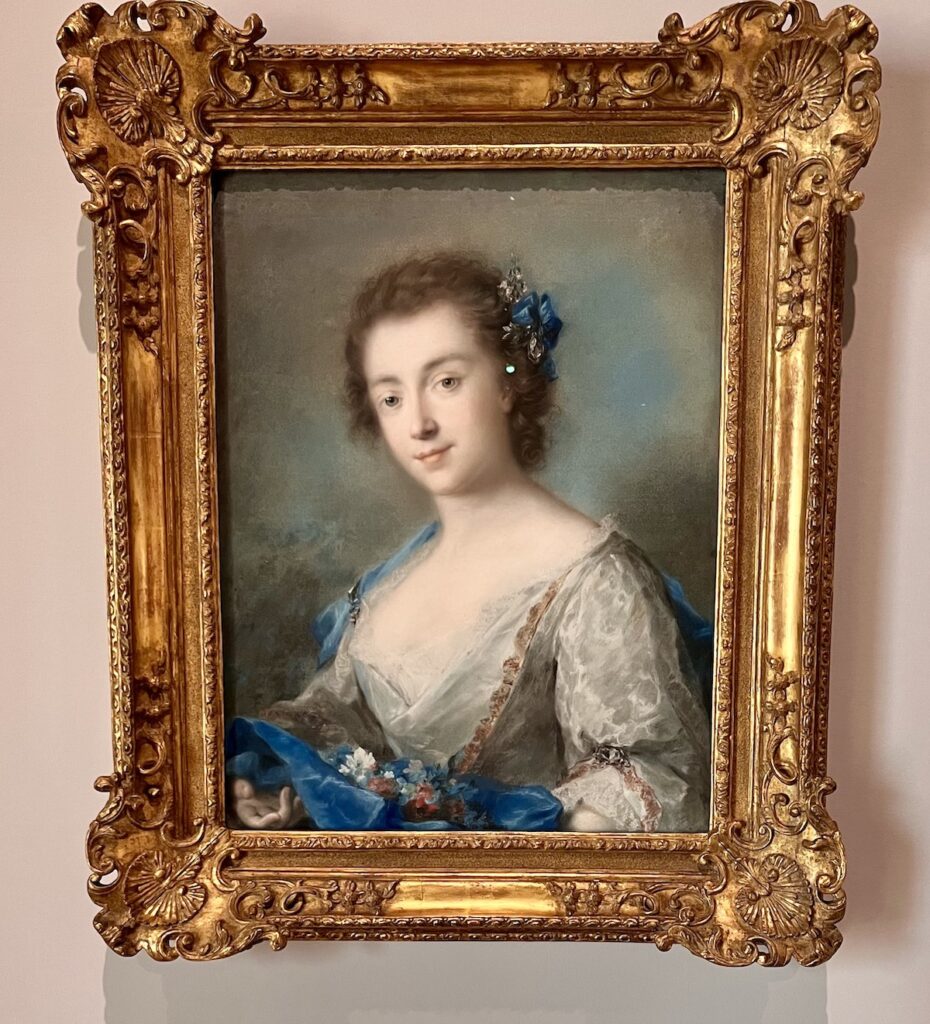
There are two other Spotlight portraits that relate to female painters:
Portrait of a Woman, Possibly Lady Jane Twisden, née Thomlinson (c. 1670) is attributed to the seventeenth-century English portrait painter Mary Beale. Beale is the subject of Fruit of Friendship: Portraits by Mary Beale at Philip Mould & Co in London. The artist also features in Now You See Us: Women Artists in Britain, 1520–1920, opening this week at Tate Britain.
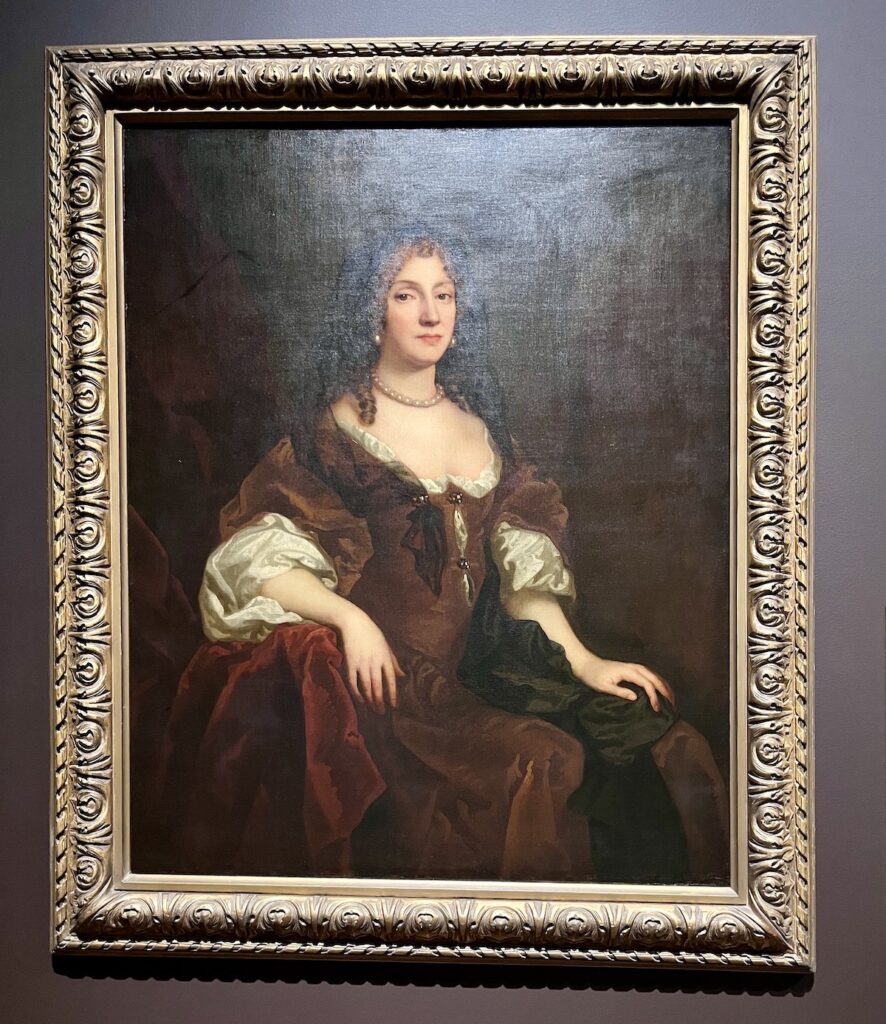
We don’t know who painted the master copy of Angelica Kauffman’s Self-Portrait (1770–75). This is the painting’s first time on view in over 20 years. Kauffman, too, is the subject of a solo exhibition in London: Angelica Kauffman runs at the Royal Academy through June 30, 2024.
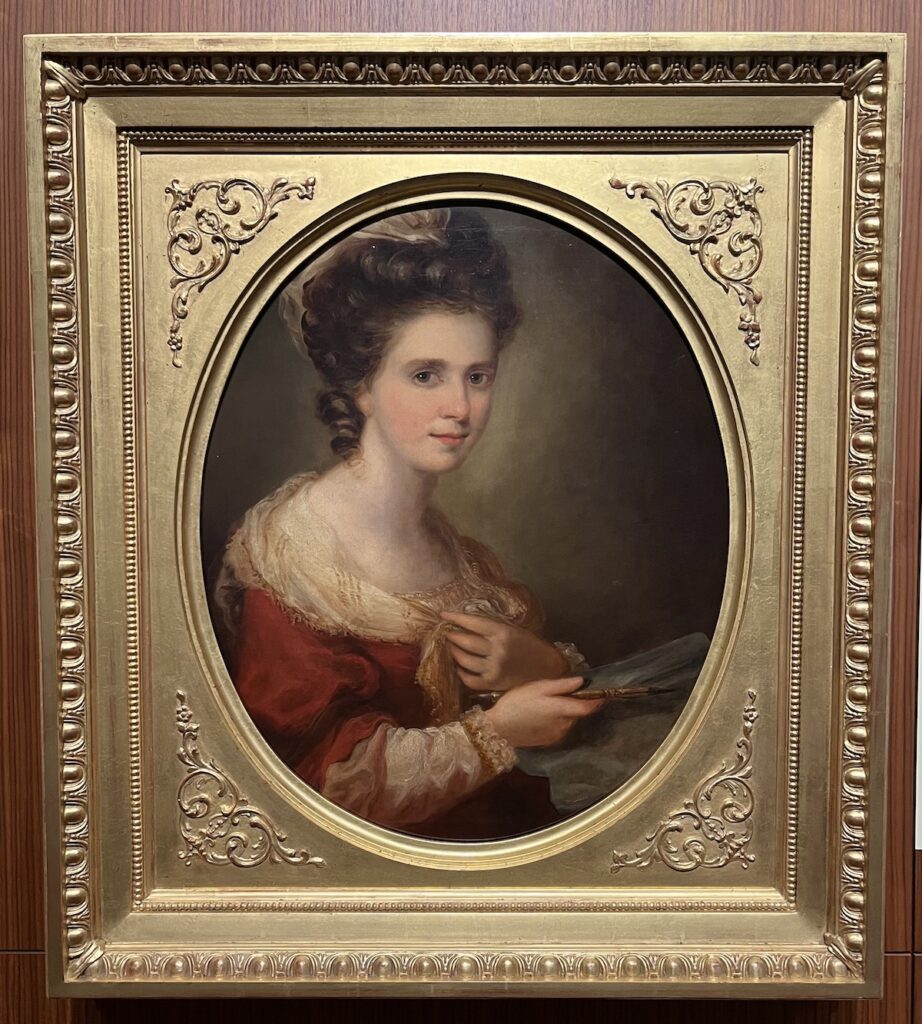
Portrait Miniatures
Toward the center of the second-floor gallery, there are five tiny portraits on display behind glass.
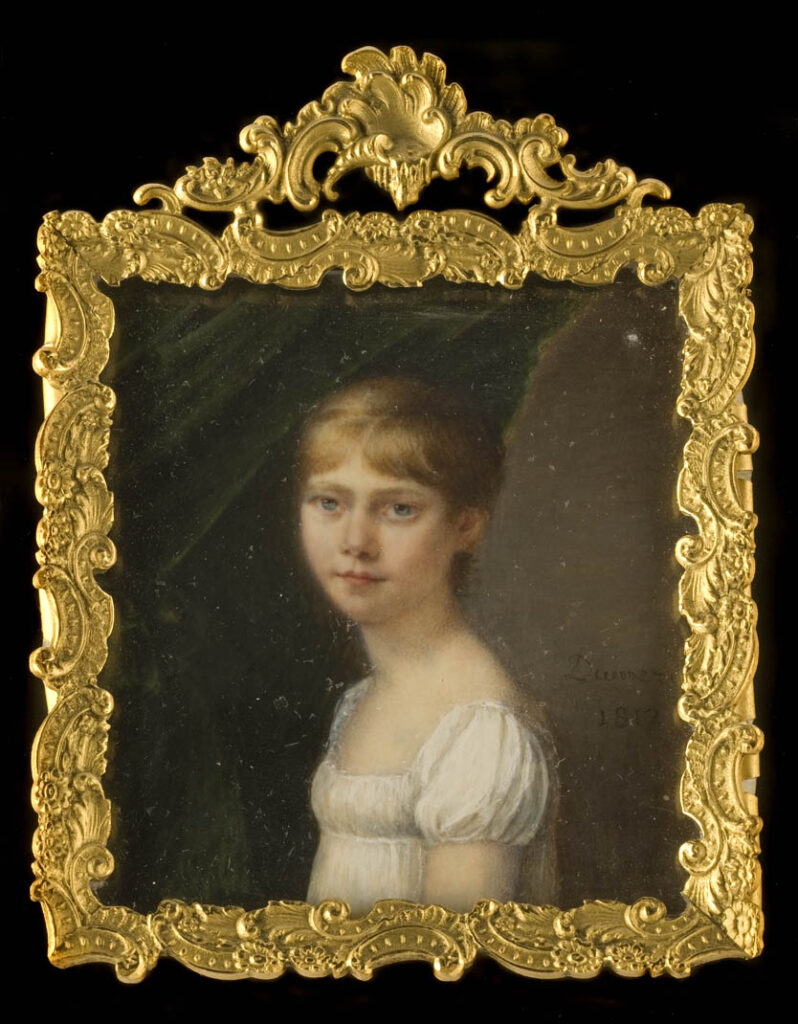
All five of the miniatures, which have not been on view since 1989, are by French women artists of the late eighteenth to the mid-nineteenth century:
- Miniature Portrait of a Woman (possibly Théroigne de Méricourt), 1780s, is attributed to Adélaïde Labille-Guiard
- Miniature Portrait of a Woman (c. 1780–90) is attributed to Marie-Gabrielle Capet, Labille-Guiard’s student and friend
- Miniature Portrait of a Woman (early 19th century?) is attributed to Lizinka Aimée Zoé de Mirbel, née Rue
- Miniature Portrait of a Young Woman (1812) is by Madame Dumeray, née Brinau
- Miniature Portrait of a Women (1821) is by Sophie-Clémence Delacazette
The medium of all five works is gouache and watercolor on ivory. The image above illustrates the delicate and precise quality of the paintings. The image below conveys their incredibly small size!
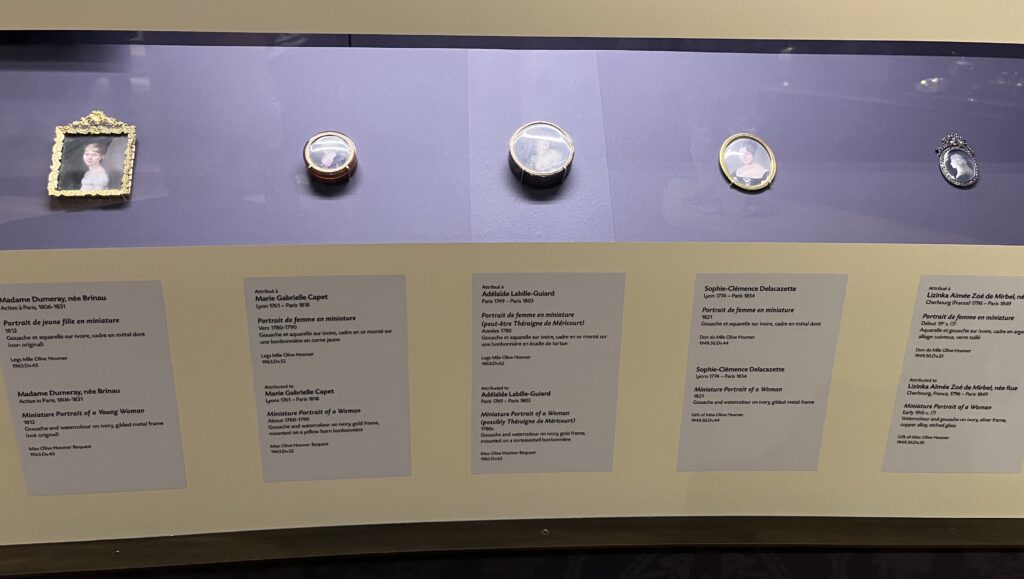
Still lifes and a botanical drawing
Spotlight includes one still life or botanical drawing each from the nineteenth, eighteenth, and seventeenth centuries. On the second floor, on display for the first time ever at the Montreal Museum of Fine Arts, is Imperial Fritillary (1834) by botanical artist Laura Devéria.
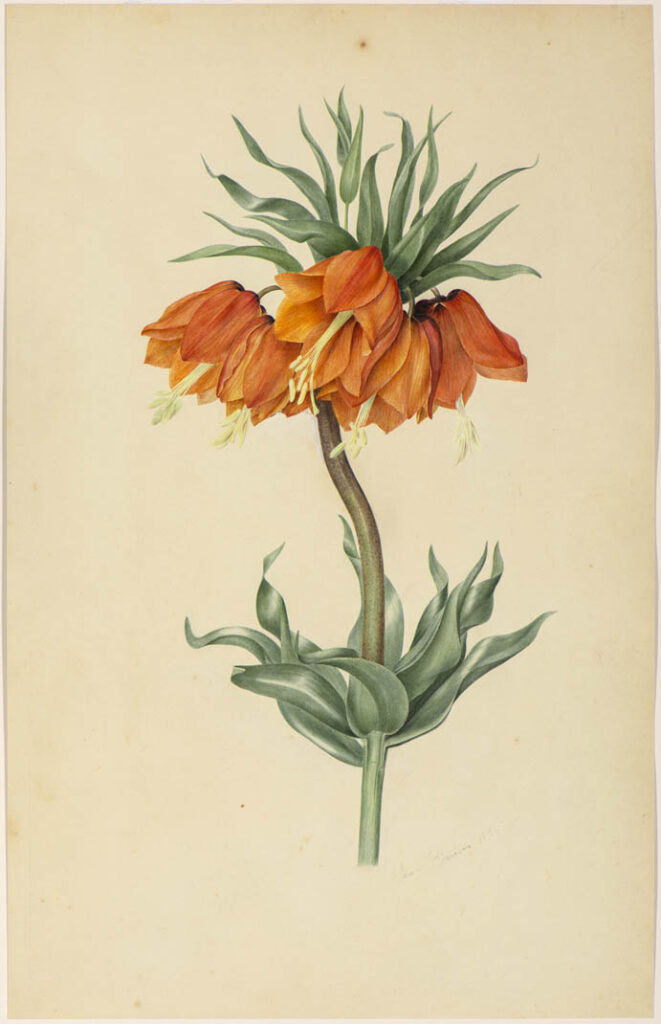
On the same floor is Still Life with Peaches and Silver Goblet (1778) by eighteenth-century French painter Anne Vallayer-Coster. The work is relatively new to the museum, which acquired it in 2021. Vallayer-Coster’s posthumous fortunes at auction have been rising in recent years. Last fall the National Gallery of Art in Washington, DC announced its purchase of Still Life with Flowers in an Alabaster Vase and Fruit, which the artist so valued that she kept it in her personal possession until her death. The previous summer, Christie’s had sold the painting for just over two million euros, setting a new price record for the artist.
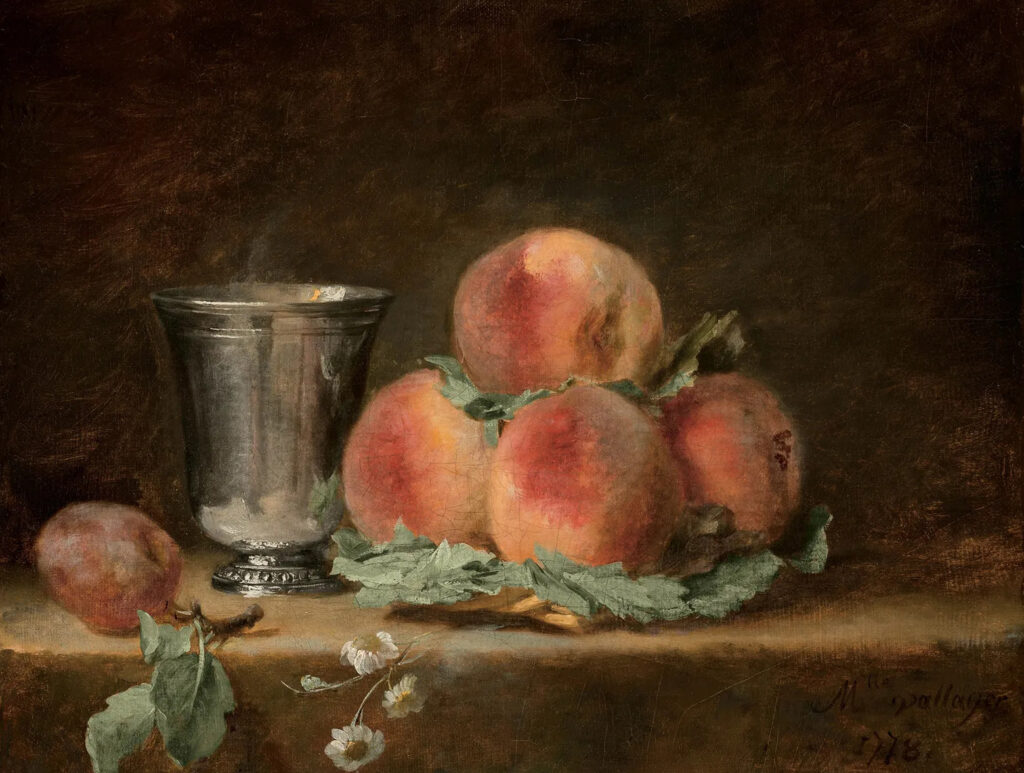
And moving up one floor, among artworks of the Dutch and Flemish seventeenth century, is Vase of Flowers (c. 1670), attributed to Maria van Oosterwyck (sometimes spelled Maria van Oosterwijck). As the wall text observes, “Insects, including a fluttering white butterfly and a dangling spider, breathe even more life into the painting.”
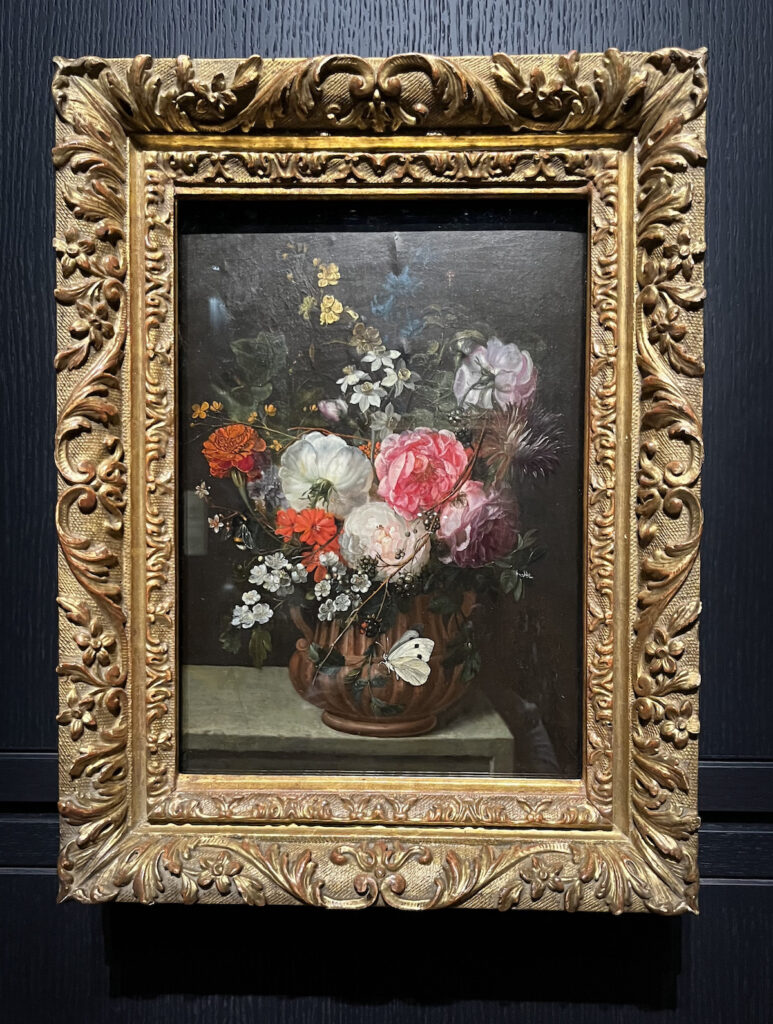
The museum also owns a still life painting by Fede Galizia, which is on loan to the Making Her Mark exhibition and thus is not present for the current show in Montreal.
Sculptures
The three-dimensional works on display include one very small work from (probably) the second half of the eighteenth century, and one much larger, more recent sculptural composition.
Flayed Figure, a small boxwood statuette, is by an unknown sculptor. Its relevance in this context is that experts believe it replicates—in small-scale—an anatomical model by Anna Morandi Manzolini, an artist, professor and scientist in eighteenth-century Bologna.
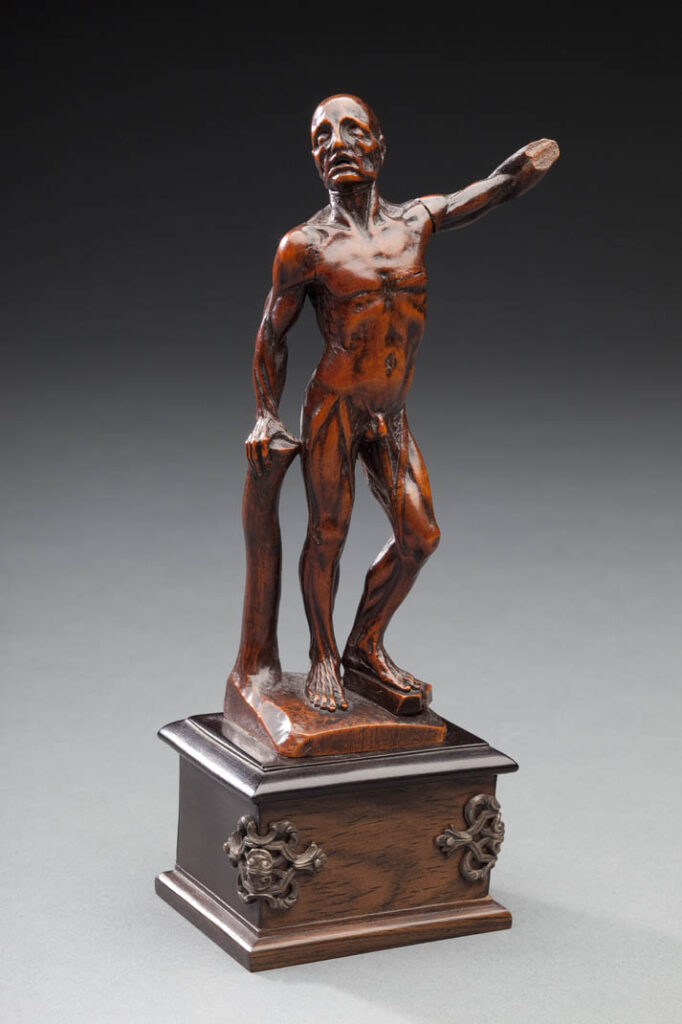
Beth Lipman’s Tea Table II (2005) carries reference to still life as a genre. The artist’s statement explicitly mentions temporality and mortality. Intentionally or not, the installation calls to mind Anna Maria van Schurman and Anna Roemers Visscher, among other female glass engravers of the seventeenth century.
Engravings
And speaking of women engravers … On the third floor the museum proudly presents, in a glass case, three newly acquired engravings by Magdalena de Passe. (Her name is sometimes seen as Magdalena van de Passe.) Dated at about 1620, these are the earliest signed works by a woman artist in the museum’s European art collection. As the Spotlight label states, “Each is prominently inscribed ‘Magdaleena de pas fecit’ (Magdalena de Pas made this).”
The display case contains
- Landscape with a Mill and a Shepherd with Small Flock Resting beneath a Large Tree, after Adam Willaerts;
- Landscape with Travelers and a Donkey, after Paul Bril; and
- Landscape with a Stable and a Horse Eating, also after Paul Bril
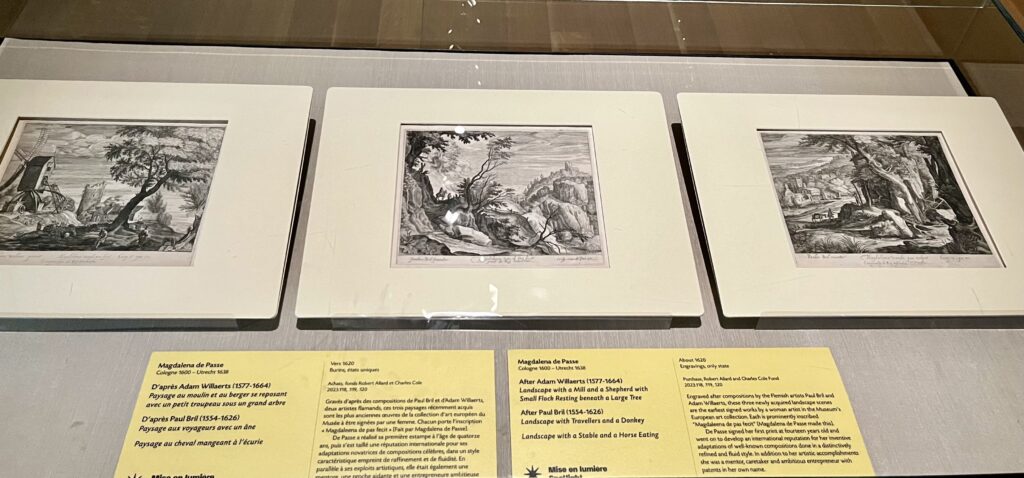
Look for the Spotlight star
The Spotlight artworks are on the second and third floors of the Michal and Renata Hornstein Pavilion for Peace. (Our one recommendation for the museum team would be to advertise the exhibition more widely within the building. It would be helpful to put signage in the lobby. Perhaps the museum could advertise Spotlight at the ticket counter; and/or in the final gallery on the first floor. The first signage we saw about the Spotlight feature was on the second-floor landing, where a casual visitor may not venture.) The works by women makers appear throughout the galleries; look for the special yellow labels with a “spotlight” star.

The primary focus of the Spotlight is art by early modern women. But the museum does also hold in its permanent collection paintings, drawings and sculpture by women artists of later periods. The Pavilion’s first floor displays paintings by Marie Spartali Stillman, Marie Laurencin, Thérèse Schwartze, Elaine de Kooning (at least!). There is also a sculptural work by Niki de Saint Phalle.
This Spotlight exhibition technically closes on July 7th, because some of the art is too fragile to remain on display for longer than a few months. But the museum does plan to keep some of the more stable works on view permanently. Even if you cannot get to the show, you can hear more about it in Ladies to the Front on CBC Radio’s “Let’s Go! With Sabrina Marandola.” In this segment, curator Chloé Pelletier discusses the Spotlight feature into some detail, and explains the motivation behind it.
Erika Gaffney is Founder of Art Herstory. Follow Erika on Twitter, LinkedIn and Facebook.
More Art Herstory posts you might enjoy:
A Year for Dutch and Flemish Women Artists
Historic Women Artists in Public Collections: The Kimbell Art Museum, by Olivia Turner
Portrayals of Mary Magdalene by Early Modern Women Artists, by Diane Apostolos-Cappadona
Two of a Kind: Giovanna Garzoni and Artemisia Gentileschi, by Mary D. Garrard
The Priceless Legacy of Artemisia Gentileschi: A Curator’s Perspective, by Judith W. Mann
Female Solidarity in Paintings of Judith and her Maidservant by Italian Women Artists, by Sivan Maoz
Plautilla Nelli and the Workshop of Santa Caterina in Cafaggio, by Alessia Motti
Roma Pittrice: Women Artists at Work in Rome Between the Sixteenth and Nineteenth Centuries, by Alessandra Masu
More Art Herstory exhibition news:
Museum Exhibitions about Historic Women Artists: 2025
Museum Exhibitions about Historic Women Artists: 2024
Female Artists and their Remarkable Careers: An Appeal to Rethink Art History, by Jenny Körber
Women Artists at the Cape Ann Museum, by Erika Gaffney
Making Her Mark, An Essential Corrective in the History of Art, by Chadd Scott
Masters and Sisters in Arts, by Jitske Jasperse
Reflections on Making Her Mark at the Baltimore Museum of Art, by Erika Gaffney
Thoughts on Feminist Art History in the Wake of Artemisia: Vrouw & Macht at Rijksmuseum Twenthe, by Jitske Jasperse
Sofonisba Anguissola in Holland, an Exhibition Review, by Erika Gaffney with Cara Verona Viglucci
Thérèse Schwartze (1851–1918), by Ien G.M. van der Pol
Anna Dorothea Therbusch: A Woman Painting Against Eighteenth-century Odds, by Stephanie Pearson
Rosa Bonheur—Practice Makes Perfect, by Ien G.M. van der Pol
The Many Faces of Suzanne Valadon, by Suzanne Singletary
Thoughts on By Her Hand, the Hartford Iteration, by Erika Gaffney
Plautilla Bricci: A Painter & “Architettrice” in Seventeenth-century Rome, by Alessandra Masu
“La grandezza del universo” nell’arte di Giovanna Garzoni / “The grandeur of the universe” in the art of Giovanna Garzoni, by Dr. Sara Matthews-Grieco
In defense of monographic exhibitions of female artists: The case of Fede Galizia, by Camille Nouhant
The Ladies of Art are in Milan, by Cecilia Gamberini



